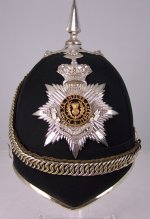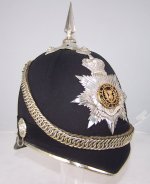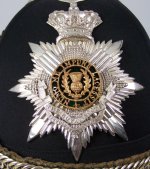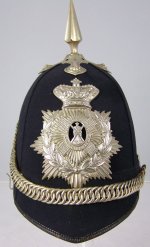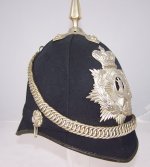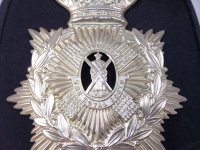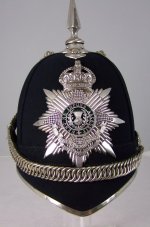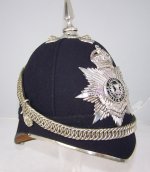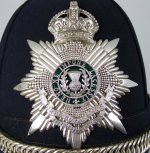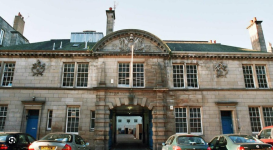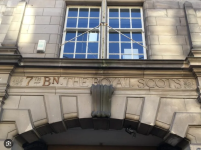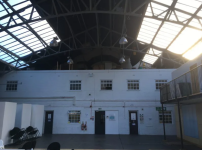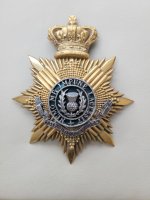RoyalScotsVols
Member
On 6th August 1859, 153 gentlemen from Leith (then a seperate town on the coast adjacent to Edinburgh) offered to form two rifle companies which were to pay all their own expenses and provide their own arms. This was quickly followed by the further offer of two companies of Leith artisans who paid a contribution of 30 shillings each with the rest of their expenses being defrayed by public subscription. These offers were accepted and on 6th December 1859 the 1st Midlothian (Leith) Rifle Volunteer Corps was formed of 4 companies with 4 more and a brass band being established by May 1861 - all recruited from Leith.
The original uniform of the corps was a dark grey tunic, trousers and peaked cap with black facings, leggings and belt. The badge on the cap and pouch-belt was a lion rampant within a wreath. This uniform was changed in 1863 to scarlet tunics with black facings, bue trousers with scarlet seam piping, blue shakos with black horse hair plumes and black waist and pouch belts. This was worn until 1878 when the home service helmet was introduced to replace the shako and in 1885 white belts with complete valise equipment, greatcoat etc replaced the previous black belts.
Pictured below is either an officers or perhaps a senior NCO's helmet of the 1st Midlothian Rifle Volunteers. The cork construction of the helmet has been described in previous posts on the forum but this helmet is green cloth covered (as opposed to the more common blue) as appropriate for a rifle volunteer unit. The reason that I query whether it is an officers or SNCO's helmet is that although the shell is of officers quality and with the metal bound peak the helmet fittings are of white metal OR's standard albeit the chinchain is velvet (rather than leather) backed. As these helmets were worn mainly for formal parades, they were not always daily wear. Accordingly, as their purchase would have been a not inconsiderable expense, occasionally an officer would order their helmet with either some or all of the cheaper OR's fittings. Unfortunately the helmet is unnamed or else it would have been relatively straightforward to have searched the Army List for an officer of that name. Whether an officers or SNCO's helmet, this is a rare survivor from this period.
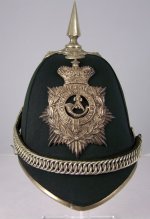
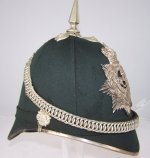
The original uniform of the corps was a dark grey tunic, trousers and peaked cap with black facings, leggings and belt. The badge on the cap and pouch-belt was a lion rampant within a wreath. This uniform was changed in 1863 to scarlet tunics with black facings, bue trousers with scarlet seam piping, blue shakos with black horse hair plumes and black waist and pouch belts. This was worn until 1878 when the home service helmet was introduced to replace the shako and in 1885 white belts with complete valise equipment, greatcoat etc replaced the previous black belts.
Pictured below is either an officers or perhaps a senior NCO's helmet of the 1st Midlothian Rifle Volunteers. The cork construction of the helmet has been described in previous posts on the forum but this helmet is green cloth covered (as opposed to the more common blue) as appropriate for a rifle volunteer unit. The reason that I query whether it is an officers or SNCO's helmet is that although the shell is of officers quality and with the metal bound peak the helmet fittings are of white metal OR's standard albeit the chinchain is velvet (rather than leather) backed. As these helmets were worn mainly for formal parades, they were not always daily wear. Accordingly, as their purchase would have been a not inconsiderable expense, occasionally an officer would order their helmet with either some or all of the cheaper OR's fittings. Unfortunately the helmet is unnamed or else it would have been relatively straightforward to have searched the Army List for an officer of that name. Whether an officers or SNCO's helmet, this is a rare survivor from this period.



